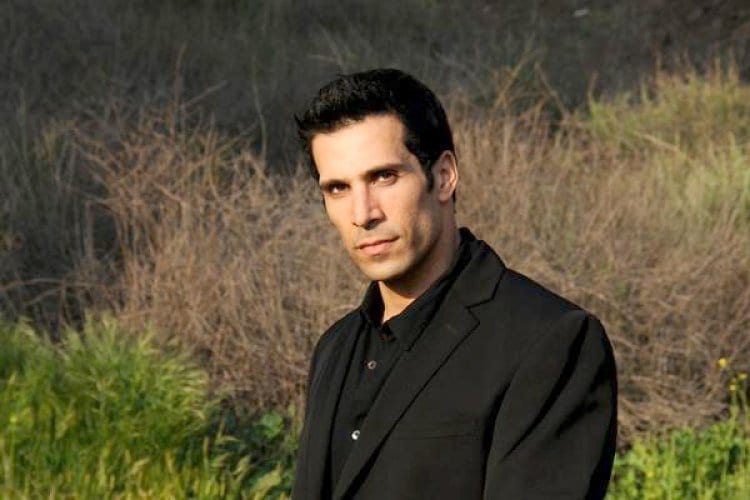Activités Hidabrout.
Hidabrout c'est quoi au juste ? Quelles sont nos activités ?
En quoi suis-je concerné/e ?
Hidabrout est une chaine de télévision et le plus grand site sur le Judaïsme au monde. Cette chaine fonctionne à partir d'Israël et emploie plus de 400 personnes qui travaillent pour le Peuple Juif sur 40 divisions. Nous émettons des programmes uniques et originaux tournant autour d'une grande variété de sujets comme l'actualité, le judaïsme, la femme, les enfants, la Tora et la science, la culture, etc. Sur notre site nous avons une très large section de vidéos sur demande basée sur les différentes émissions et programme d'Hidabrout.
L'organisme d'Hidabrout a été fondé par le Rav Zamir Cohen pour expliquer le Judaisme de par le monde. Nous sommes convaincus que beaucoup de juifs n'ont pas l'opportunité de vivre la belle facette du Judaïsme tout simplement à cause d'un manque de connaissances. Nous avons donc pris sur nous cette tâche de montrer la beauté du Judaïsme authentique et de la répandre de par le monde. Hidabrout crée différents contenus juifs sur plusieurs plateformes.
Activités Hidabrout.
La chaine Hidabrout sur chaine 97 est une des plus célèbres.
Notre chaine de TV est active 24h/24 à l'omission du Shabbat et des fêtes juives. Nous mettons en œuvre des conférences sur le Judaïsme, le développement du caractère, les lois juives, le couple, les relations humaines, l'éducation ainsi que toutes sortes de programmes tournant autour de problèmes courants, de la culture, des femmes etc… La chaine a beaucoup de succès et d'ailleurs un sondage du bureau de géo cartographie a classé la chaine Hidabrout comme la chaine leader d'Israël.
Vous pouvez accéder à la chaine è partir du monde entier par les décodeurs Roko, Amazon, Apple TV, Chrome Custom et You Tube. Très prochainement nous aurons une chaine en Anglais au Etats Unis.
Le site Hidabrout un des plus grands sites au monde.
Le site Hidabrout a élaboré tous ces programmes de la chaine de télévision à travers la section VOD présentés sous format agréable. Il y a en plus du contenu une grande variété de sujets partagés sous différents titres : actualité, Judaïsme, spiritualité, Tora et science etc…
D'autre part nous avons plusieurs zones d'activité comme 'demandez au Rav', 'le monde des enfants', 'un coin lecture' etc…En moyenne 700000 personnes sont inscrites sut le site et certaines pages sont lues par 300000 personnes par mois une moyenne de 23 lectures par minute. Nous sommes couramment en phase de traduire notre site en 20 langues différentes afin d'accéder des juifs de par le monde.
Magazine imprimé et virtuel.
Hidabrout publie un magazine mensuel en couleur avec des articles clés. Toutes les semaines la brochure Hidabrout Oneg Shabbat est publiée par milliers dans les différentes synagogues pour que les lecteurs puissent en profiter autour de la table de Shabbat. Le Jeudi des milliers d'abonnés retrouvent dans leur boite mail notre lettre de fin de la semaine. Hidabrout envoie aussi une lettre journalière et une lettre pour les dames intitulée 'koulana' ainsi qu'une lettre contenant les questions demandées par les lecteurs avec les réponses.
CONFERENCES ET WEEKEND
Toutes les semaines Hidabrout organise des conférences sur tout Israël avec la participation des Rabbanim d'Hidabrout. D'autre part plusieurs weekends sont organisés tout autour ddu pays ; ces weekends renforcent les participants physiquement et moralement. Toutes les conférences et weekends sont annoncés sur le site.
Hidabrout pour la communauté.
Certaines sections d'Hidabrout sont dédiées aux besoins communautaires tels que le prélèvement de la Hallah, des mini séminaires à la maison, une section spéciale 'maman' ayant pour but d'éviter les avortements ; une section qui a pour but de sauver les femmes prisonnières et une section charité ayant pour but l'aide aux familles nécessiteuses.
Sites Chidoukhim
Hidabrout maintient 2 excellents sites pour mettre en place des rencontres entre jeunes afin qu'ils fondent leur foyer. Un site nommé “Shéva Brakhot” contient une liste de 12000 jeunes par le biais de laquelle 100 couples se sont déjà mariés. Le site 'Chidoukh Hareidi' contient une base de données exclusivement adaptée au secteur ultra religieux et répondant à son standard. Le site sert de liaison entre les deux parties intéressées.
Département Diaspora.
Hidabrout est en phase de développer ses activités de par le monde et nous sommes en train de mettre en place un département Diaspora qui comprendra des centaines de vidéos sur des conférences en toutes langues.
Hidabrout c'est quoi au juste ? Quelles sont nos activités ?
En quoi suis-je concerné/e ?
Hidabrout est une chaine de télévision et le plus grand site sur le Judaïsme au monde. Cette chaine fonctionne à partir d'Israël et emploie plus de 400 personnes qui travaillent pour le Peuple Juif sur 40 divisions. Nous émettons des programmes uniques et originaux tournant autour d'une grande variété de sujets comme l'actualité, le judaïsme, la femme, les enfants, la Tora et la science, la culture, etc. Sur notre site nous avons une très large section de vidéos sur demande basée sur les différentes émissions et programme d'Hidabrout.
L'organisme d'Hidabrout a été fondé par le Rav Zamir Cohen pour expliquer le Judaisme de par le monde. Nous sommes convaincus que beaucoup de juifs n'ont pas l'opportunité de vivre la belle facette du Judaïsme tout simplement à cause d'un manque de connaissances. Nous avons donc pris sur nous cette tâche de montrer la beauté du Judaïsme authentique et de la répandre de par le monde. Hidabrout crée différents contenus juifs sur plusieurs plateformes.
Activités Hidabrout.
La chaine Hidabrout sur chaine 97 est une des plus célèbres.
Notre chaine de TV est active 24h/24 à l'omission du Shabbat et des fêtes juives. Nous mettons en œuvre des conférences sur le Judaïsme, le développement du caractère, les lois juives, le couple, les relations humaines, l'éducation ainsi que toutes sortes de programmes tournant autour de problèmes courants, de la culture, des femmes etc… La chaine a beaucoup de succès et d'ailleurs un sondage du bureau de géo cartographie a classé la chaine Hidabrout comme la chaine leader d'Israël.
Vous pouvez accéder à la chaine è partir du monde entier par les décodeurs Roko, Amazon, Apple TV, Chrome Custom et You Tube. Très prochainement nous aurons une chaine en Anglais au Etats Unis.
Le site Hidabrout un des plus grands sites au monde.
Le site Hidabrout a élaboré tous ces programmes de la chaine de télévision à travers la section VOD présentés sous format agréable. Il y a en plus du contenu une grande variété de sujets partagés sous différents titres : actualité, Judaïsme, spiritualité, Tora et science etc…
D'autre part nous avons plusieurs zones d'activité comme 'demandez au Rav', 'le monde des enfants', 'un coin lecture' etc…En moyenne 700000 personnes sont inscrites sut le site et certaines pages sont lues par 300000 personnes par mois une moyenne de 23 lectures par minute. Nous sommes couramment en phase de traduire notre site en 20 langues différentes afin d'accéder des juifs de par le monde.
Magazine imprimé et virtuel.
Hidabrout publie un magazine mensuel en couleur avec des articles clés. Toutes les semaines la brochure Hidabrout Oneg Shabbat est publiée par milliers dans les différentes synagogues pour que les lecteurs puissent en profiter autour de la table de Shabbat. Le Jeudi des milliers d'abonnés retrouvent dans leur boite mail notre lettre de fin de la semaine. Hidabrout envoie aussi une lettre journalière et une lettre pour les dames intitulée 'koulana' ainsi qu'une lettre contenant les questions demandées par les lecteurs avec les réponses.
CONFERENCES ET WEEKEND
Toutes les semaines Hidabrout organise des conférences sur tout Israël avec la participation des Rabbanim d'Hidabrout. D'autre part plusieurs weekends sont organisés tout autour ddu pays ; ces weekends renforcent les participants physiquement et moralement. Toutes les conférences et weekends sont annoncés sur le site.
Hidabrout pour la communauté.
Certaines sections d'Hidabrout sont dédiées aux besoins communautaires tels que le prélèvement de la Hallah, des mini séminaires à la maison, une section spéciale 'maman' ayant pour but d'éviter les avortements ; une section qui a pour but de sauver les femmes prisonnières et une section charité ayant pour but l'aide aux familles nécessiteuses.
Sites Chidoukhim
Hidabrout maintient 2 excellents sites pour mettre en place des rencontres entre jeunes afin qu'ils fondent leur foyer. Un site nommé “Shéva Brakhot” contient une liste de 12000 jeunes par le biais de laquelle 100 couples se sont déjà mariés. Le site 'Chidoukh Hareidi' contient une base de données exclusivement adaptée au secteur ultra religieux et répondant à son standard. Le site sert de liaison entre les deux parties intéressées.
Département Diaspora.
Hidabrout est en phase de développer ses activités de par le monde et nous sommes en train de mettre en place un département Diaspora qui comprendra des centaines de vidéos sur des conférences en toutes langues.
Personnel responsable du site :
Manager : Erez Maymon
Directeur du développement : Haim Gerber
Ecrivains : Ari Waldman, Yossi Vakrat, Yafit Betzalel, et autres.
Entrée du contenu : Nossi Tuch
Editeur des vidéos : Chaim Erenfeld
Photographes : Binyamin Sulam, Eran Yaacov
Vous pouvez nous contacter au:
0 61 3 minutes read




